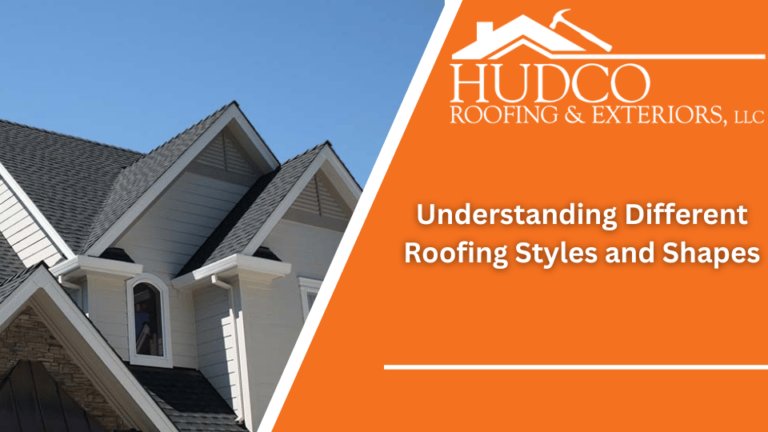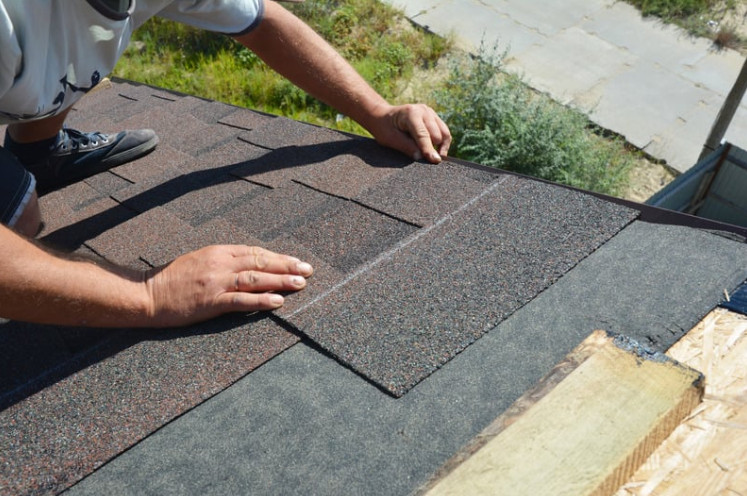Understanding Different Roofing Styles and Shapes: A Guide by HUDCO Roofing & Exteriors
When choosing the perfect roof for your home, it’s essential to understand different roofing styles and shapes. Each style offers distinct benefits, allowing homeowners to tailor their roofing decisions based on aesthetics, function, and environmental factors. This guide will delve into various roofing styles and shapes, helping you make an informed decision.
1. Common Roofing Styles and Their Characteristics
Numerous roofing options are available, each with unique features. Understanding these different roofing styles and shapes can help you choose the best one for your home.
Gable Roof (Pitched or Peaked Roof)
One of the most popular styles, the gable roof features two sloping sides that meet at a central ridge. This simple design allows for excellent water drainage and ample attic storage or insulation space.
Advantages:
- Efficient water runoff.
- Provides extra attic space.
- Easy to build and maintain.
Considerations:
- Can be vulnerable to wind damage.
- Requires additional bracing in areas with heavy snowfall.
Hip Roof
A hip roof has four sloping sides, all meeting at a common ridge. This design is known for its stability, making it ideal for areas prone to high winds and severe weather.
Advantages:
- Excellent stability and wind resistance.
- Provides additional attic space.
- Suitable for various architectural styles.
Considerations:
- More complex to build, raising costs.
- Limited space for large windows or attic conversions.
Mansard Roof (French Roof)
The mansard roof is distinguished by steep, nearly vertical slopes on all sides, often complemented with dormer windows. This style creates more living space in the upper levels of a home.
Advantages:
- Maximizes attic space.
- Aesthetic and flexible design.
- Efficient water drainage.
Considerations:
- Complex construction increases cost.
- Needs regular maintenance for flat top sections.
Gambrel Roof
A gambrel roof features two different slopes on each side, with a steeper lower slope and a shallower upper slope. Commonly seen on barns and farmhouses, this roof style adds character and practicality.
Advantages:
- Provides additional attic space.
- Traditional, charming appearance.
- Efficient rainwater drainage.
Considerations:
- Requires maintenance to prevent leaks.
- Less suited for heavy snowfall.
2. Unique Roofing Styles for Modern and Historic Homes
Exploring different roofing styles and shapes can also provide a balance between functionality and design. Here are some other unique options.
Flat Roof
Common in modern and minimalist homes, flat roofs are nearly level, with a slight slope for drainage. They offer a sleek, contemporary look and provide space for gardens or solar panels.
Advantages:
- Simple design.
- Space-efficient for gardens and solar panels.
- Creates outdoor living areas.
Considerations:
- Susceptible to water pooling.
- Requires regular inspections to prevent leaks.
- Less energy-efficient due to poor insulation.
Shed Roof (Mono-Pitched Roof)
A shed roof is a single-slope design often used for additions, porches, or contemporary architecture. It is a great way to create a modern look with efficient water drainage.
Advantages:
- Easy to construct.
- Ideal for modern architectural statements.
- Efficient drainage.
Considerations:
- May limit attic or storage space.
- Lacks symmetry, affecting aesthetics.
Butterfly Roof
This modern design features two sloping roof surfaces that meet in the center, forming a V-shape resembling butterfly wings. This unique roof style allows for large windows and an abundance of natural light.
Advantages:
- Striking, eye-catching design.
- Maximizes natural light.
- Efficient rainwater collection with central gutter.
Considerations:
- Complex construction increases costs.
- Requires specialized design to prevent leaks.
Dutch Gable Roof (Gablet Roof)
A hybrid between the gable and hip roof, the Dutch gable roof features a gable-style peak with hipped sections on each side. It combines aesthetics with structural stability.
Advantages:
- Offers both the stability of a hip roof and the aesthetics of a gable.
- Adds attic space.
- Versatile for various architectural designs.
Considerations:
- More complex and expensive to build than traditional gable or hip roofs.
Jerkinhead Roof (Half-Hip Roof)
A jerkinhead roof is a variation of the gable roof, where the gable ends are clipped, creating a hipped appearance. This roof offers additional stability while maintaining the simplicity of a gable design.
Advantages:
- Enhanced wind resistance.
- Unique architectural appeal.
- Efficient water runoff.
Considerations:
- Limited attic space.
- May need extra bracing in extreme weather conditions.
Sawtooth Roof
Characterized by multiple parallel ridges with vertical or nearly vertical slopes, the sawtooth roof is often used in industrial or commercial buildings. It provides ample natural light through intermittent windows.
Advantages:
- Excellent natural lighting.
- Striking, industrial look.
- Ideal for large-scale buildings.
Considerations:
- Complex design and construction.
- Less common in residential homes.
Conclusion
Understanding different roofing styles and shapes is key to selecting the right one for your home. Each style has its advantages and considerations that should be evaluated in terms of your architectural preferences, budget, and local climate. Whether you prefer the traditional gable roof or the modern butterfly roof, there is a design that suits your needs. Consult with a roofing expert, such as HUDCO Roofing & Exteriors, to help you make the best decision.
HUDCO Roofing & Exteriors can provide you with the help you need. You can get in touch with us by calling us at 318-310-8505. We service areas in Alexandria, Houma, and Ruston, LA.



